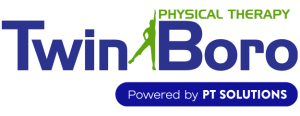Background and Etiology
The glenohumeral joint of the shoulder is a ball and socket joint between the head of the humerus bone (ball) and the glenoid fossa of the scapula (socket) or shoulder blade. The head of the humerus is large and the glenoid fossa is small, resulting in an unstable but mobile joint.
The labrum is a cartilaginous structure found in the shoulder joint. Called the glenoid labrum, it runs along the shallow socket providing extra depth to help the head of the humerus fit more securely in the joint. The labrum helps provide stability to an otherwise unstable joint, and serves as a point of attachment for several ligaments. The labrum can be damaged or torn from overuse or traumatic injury.
Labral tears can be located above (superior) or below (inferior) the socket, and can involve other structures of the shoulder joint. A SLAP (superior labrum anterior to posterior) lesion occurs along the top of the socket and may involve the nearby biceps tendon. A Bankart lesion occurs along the bottom of the socket and may involves the nearby inferior glenohumeral ligament. Labral tears can also occur in conjunction with other injuries like a shoulder dislocation.
Injuries to the labrum are typically caused by either repetitive strain or a traumatic event. The most common causes of a labral tear include:
- Trauma like a direct blow to the shoulder
- Fall onto the shoulder or a fall on an outstretched arm
- Sudden strong exertion of the structures in the shoulder joint, like when trying to lift a heavy object
- A forceful overhead reaching motion
- Repeated overuse, especially with activities that require over the head motions, like throwing
- Pain, particularly when performing activities that require over the head motions
- Pain with daily activities
- A sensation of “catching,” “popping” or “grinding”
- Pain when sleeping, particularly on the side of the body with the effected shoulder
- A feeling of instability or weakness in the shoulder
- Decreased range of motion
The labrum is a soft-tissue structure, therefore radiographic tests like X-rays do not show damage. A CT scan or MRI may be useful to diagnose a labral tear, particularly if a contrast medium (dye) is injected to help show any possible tears. Your doctor will also evaluate your condition based on medical history, range of motion, and symptoms.
For less severe injuries a conservative approach that includes physical therapy may be attempted. Small tears may respond to conservative physical therapy depending on the patient’s age, level of expected activity and functional level. However most labral tears, including those that damage nearby structures, will require arthroscopic surgical intervention to decrease pain, improve range of motion and improve function. Following arthroscopic labral repair, an intensive physical therapy program will be initiated to help restore full function of the shoulder.
Physical Therapists are professionals, educated and trained to administer interventions. As stated in The Guide to Physical Therapist Practice interventions are the skilled and purposeful use of physical therapy methods and techniques to produce changes consistent with the diagnosis, prognosis, and the goals of the patient or client.
Interventions for the labrum should be progressed based on the healing and the physician’s surgical protocol in the case of post-operative repairs. Common interventions in the treatment of Labral Tears include:
- Manual Therapeutic Technique (MTT): hands on care including soft tissue massage, and joint mobilization by a physical therapist to modulate pain and reduce any soft tissue or tendon irritation while helping to restore motion following a period of immobilization. Movements should avoid positions that place the shoulder in the position that produced the dislocation (Apprehension Sign).
- Therapeutic Exercises (TE) including exercises to strengthen the rotator cuff muscles in the shoulder and increase glenohumeral stability. Emphasis should be placed on the internal rotators and anterior muscles of the shoulder.
- Neuromuscular Reeducation (NMR) to restore stability, begin retraining the upper extremity, improve proximal joint stability and improve movement technique and mechanics (for example, throwing) in daily use of the involved upper extremity.
- Modalities including the use of ultrasound, electrical stimulation, ice, cold laser and others to decrease pain and inflammation at the shoulder and tendons.
- Home program that includes strengthening, stretching and stabilization exercises as well as instructions to help the person perform daily tasks and advance to the next functional level.
Procedures that your physician may recommend and perform in addition to physical therapy.
- REST and ICE
- The use of NSAIDS (Non Steroidal Anti-Inflammatory Drugs)
- Steroidal Injections to reduce inflammation
- Pain medication to reduce the discomfort and allow the patient to perform the recommended exercises
- Conservative care including physical therapy to restore motion, strength, and stability of the shoulder in cases where there is a small labral tear.
- Surgery to correct underlying pathology, including labral repairs or procedures to tighten the shoulder capsule or ligaments.
Prognosis
There are several factors that may influence the rate of recovery from a labral tear, and subsequent surgical intervention including the size of the tear, the quality of the tissue, the location of the tear, whether the tear was caused by acute trauma or overuse, how quickly the tear was treated, and if any other structures in the joint were effected. Other factors in recovery include:
- Outcomes are better for the younger patients rather than older patients
- Pre-injury level of function with a positive correlation between pre-surgery shoulder function and post-surgical outcomes (the better you are before you sustain an injury, the better the chance for a good outcome post-surgery)
- Motivation of the patient to return to activities like work or sports
- Patient compliance with physical therapy program is critical to a good outcome from labral repair.

